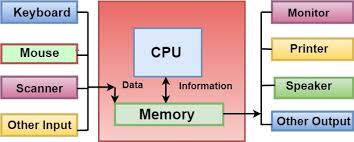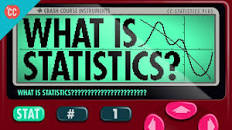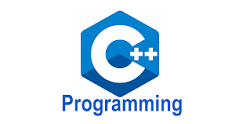COURSE OBJECTIVES:
|
UNIT |
OBJECTIVES |
|
I |
• Describe the organization and operation of a computer processor, primary and secondary memory, peripheral devices and to give computer specifications. • Explain the representation of data and information in computer systems. • Use standard word, and spreadsheets, graphics generation packages. • An introduction to the fundamentals of hardware, software and programming. • To acquire the basic knowledge of digital logic levels and application of knowledge to understand digital electronics circuits. • To analysis and design of various digital electronic circuits. |
COURSE OUTCOMES:
|
OUTCOMES |
|
CO1: The students will be able to study the fundamental concepts of computers CO2: The students will be able to study the operating systems, programming languages, peripheral devices, networking, multimedia and internet . CO3: The students will be able to study binary ,hexadecimal and octal number systems and their arithmetic . CO4: the students will be able to study how logic circuits and Boolean algebra forms as the basics of digital computer. CO5: The students will be able to simplify the Boolean expressions using karnaugh map . CO6:The students will be able to study the computer software, system software ,firmware ,middleware, acquiring computer software. CO7:The student will be able to design and implementation of correct, efficient and maintainable programs. |

Course Objective:
The objective of this course is to provide an understanding for the graduate student on statistical concepts to include Discrete distributions and continuous distributions and their applications in day to day life.
Course Outcomes:
By completing this course the student will learn to perform the following:
CO-1 Distinguish between discrete and continuous random variables.
CO-2 Construct various probability distributions for a discrete random variable
CO-3 Determine its mean and variance, and specify the probability that a discrete random variable will have a given value or value in a given range.
CO-4 Differentiate between the Bernoulli, Binomial, Negative Binomial, Poisson, Geometric, Hyper Geometric discrete probability distributions and their applications.
CO-5 Understand characteristics about continuous random variables and probability distributions
CO-6 Differentiate between the Normal, Beta, Gamma, Exponential and Cauchy distributions.
CO-7 Use the standard normal distribution and z-scores to determine probabilities associated with the normal distribution.
CO-8 Understand the role of area in the normal density function.
CO-9 Understand the relation between a normal random variable and a standard normal random variable.
CO-10 Able to perform practical applications of both discrete and continuous distributions

- Teacher: Dr. SRIDHAR BABU MOTHUKURI
- Teacher: JAIMOLE CROSS
- Teacher: MURTHY P S
The objective of this course is to provide a classroom and laboratory environment that enables students to develop basic skills in object-oriented programming and to gain experience in the C++ programming.
Each student is expected to possess the following caliber individually after successful completion of the course.
CO1 To understand how C++ improves C with object-oriented features.
CO2 To learn the syntax and semantics of the C++ programming language.
CO3 Clarity in Understanding Object-Oriented Principles.
CO4 Ability to describe and implement object-oriented concepts.
CO5 Competency for implementing any C++ programming tasks.
CO6 Proficient enough to understand any object-oriented language.
CO7 Confidence to exhibit the acquired concepts in terms of the seminar, group discussion, and programming challenges.
CO8 To learn how containment and inheritance promote code reuse in C++.

- Teacher: JAIMOLE CROSS
- Teacher: KAYAL Padmanandam
- Teacher: ANU VICTOR
Course Description
The syllabus has been designed to develop linguistic and communicative competence of undergraduate students.
In the classes, the focus is on the skills of Reading, Writing, Listening and Speaking divided under the four categories of Prose, Poetry, Vocabulary and Grammar. The teacher also asks questions to stimulate classroom discussion and based on these discussions the students will be made to write short paragraphs /essays, participate in group discussions as part of continuous assessment.
- Teacher: SAIKIRAN D